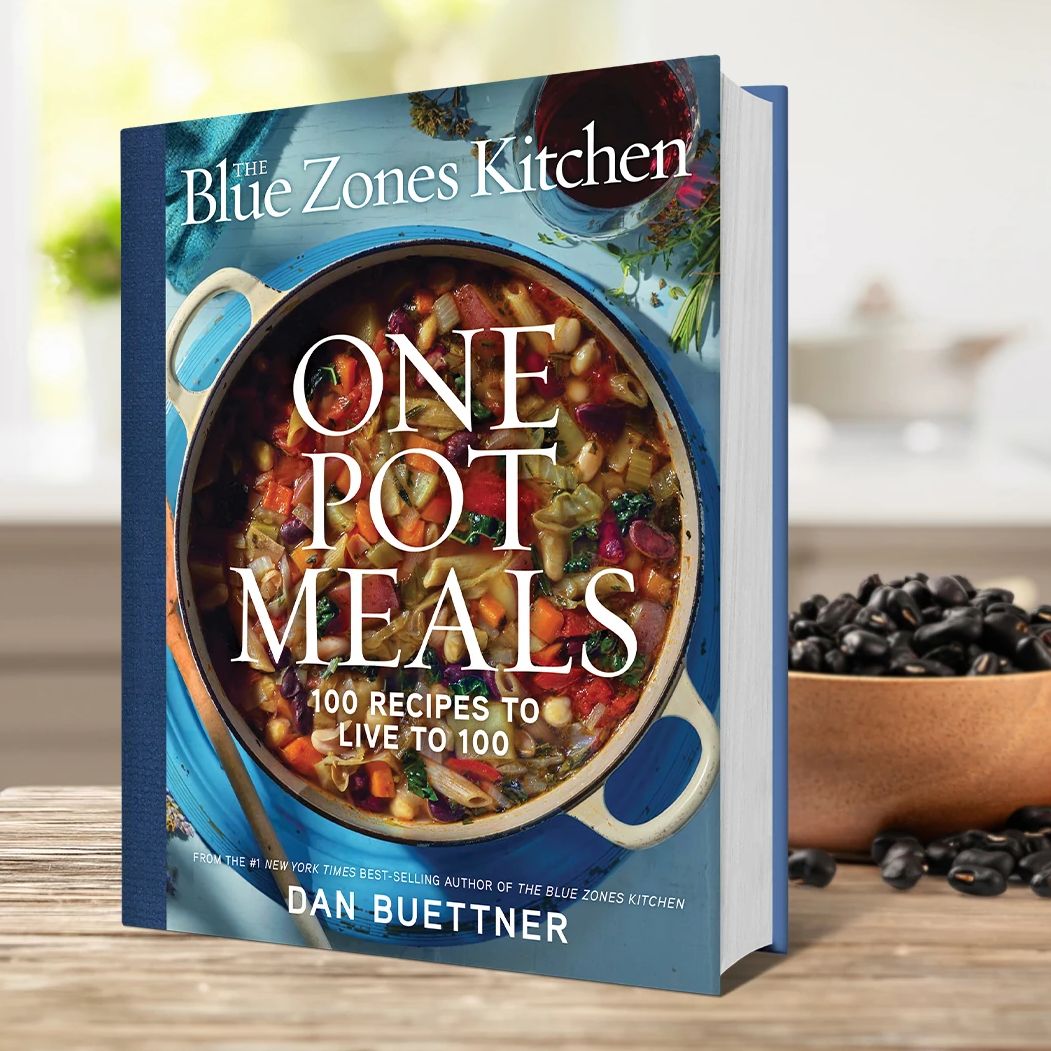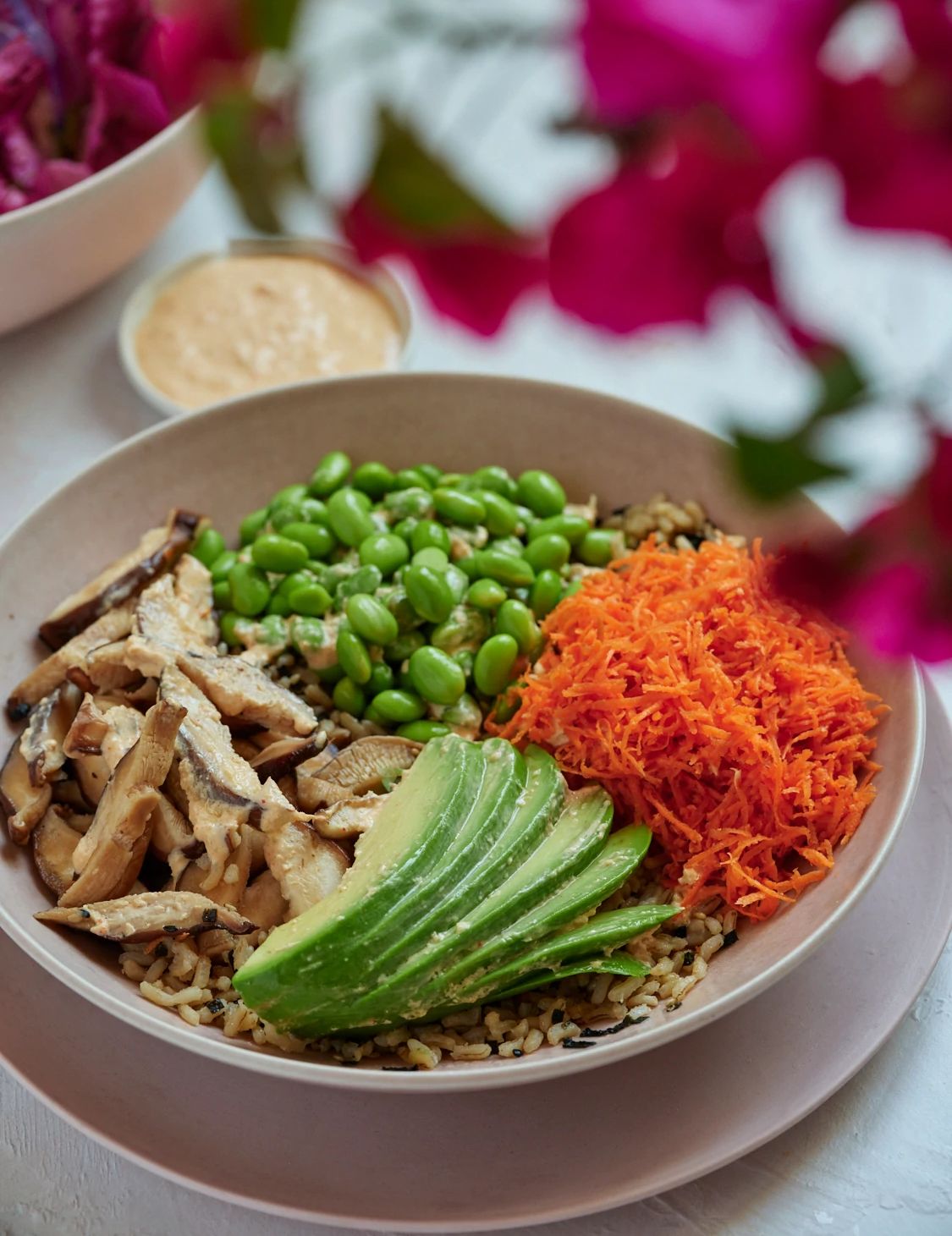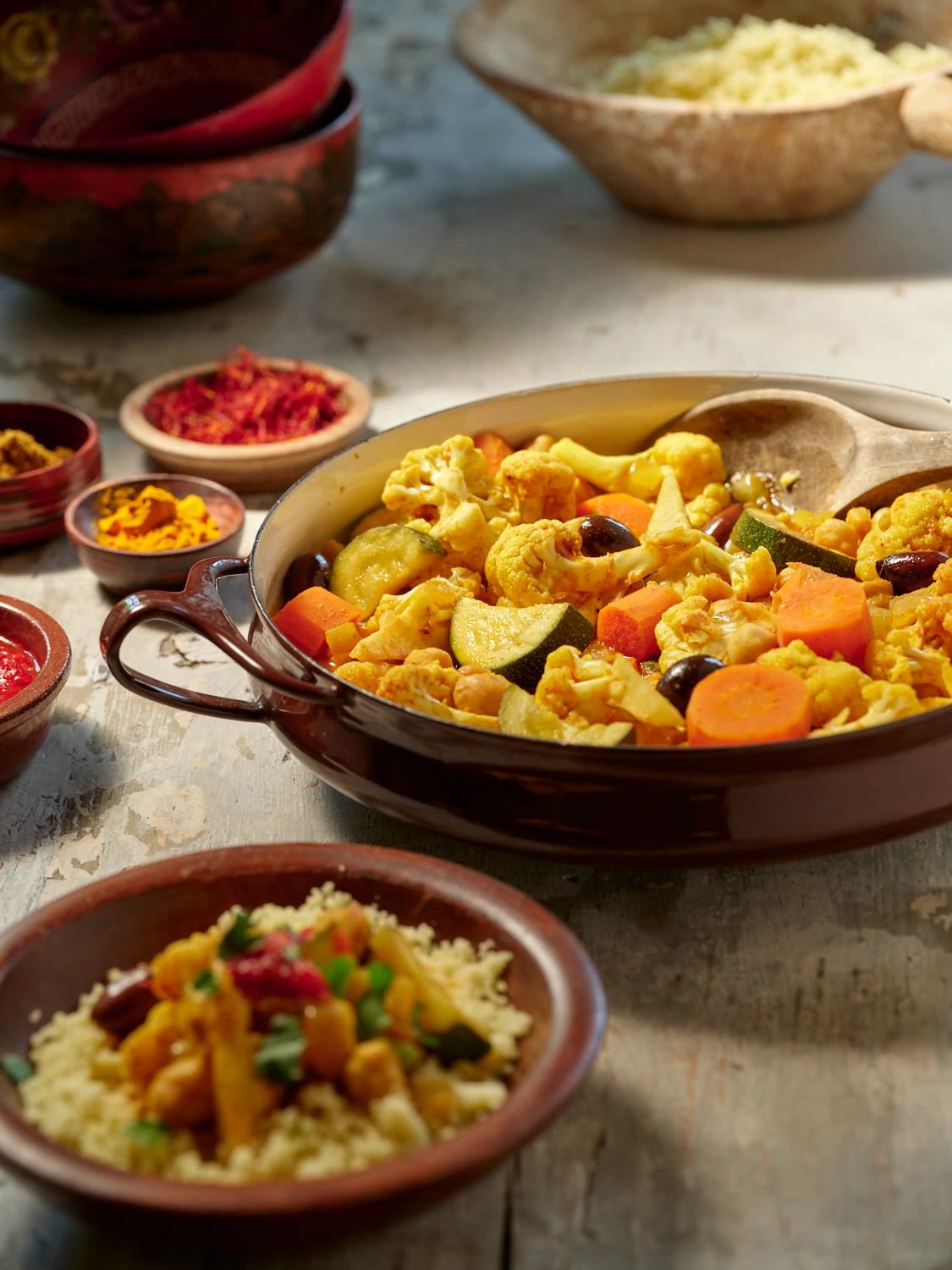Challenges


Jump to recipes
Blue Zones Burgers | 'Shroom Bowls with Creamy Dressing | Moroccan Tagine
“My mission is to make plant-based food maniacally delicious,” says journalist Dan Buettner. He's spent more than two decades traveling the globe to identify and study “blue zones” — regions like Okinawa, Japan and Ikaria, Greece where people live exceptionally long lives. Buettner has discovered that the centenarians who live in these communities share characteristics that likely contribute to their impressive lifespans — including that they don't eat much meat but enjoy lots of beans, vegetables (like sweet potatoes and wild greens), grains and nuts. Based on the research he’s seen (and his own), Buettner is convinced that eating this way could help you add years to your life. And, he adds, “moving from a standard American diet to a whole plant-based diet is the #1 thing you can do for your brain, in my opinion.”
Still, while plenty of people “are interested in longevity, … they are way more interested in eating something that’s delicious,” Buettner admits. That’s where his new cookbook, The Blue Zones Kitchen One Pot Meals: 100 Recipes to Live to 100, comes in. He wanted all the food to taste fantastic, so he began by partnering with Stanford University’s Computational Psychology and Well-Being Lab to choose the flavors Americans crave most. He used that data to create “the most mouthwatering recipes” that require “the least amount of effort,” he writes in the book.
Buettner himself now eats a mostly plant-based diet and has made other changes in response to what he’s learned from centenarians. For example, people in blue zones don't really work out; instead, they simply move around for most of the day, whether it’s a walk to the market for dinner ingredients or yard work done with hand tools. Research is finding that this approach to staying active could offer more health benefits than what Americans tend to do, which is to hit the gym and then sit for the rest of the day. This explains why, during a recent phone interview with Staying Sharp, Buettner fielded our questions outdoors while cutting down weeds with a machete. Here’s what he had to say.
To begin, can you explain what a blue zone is? What criteria needs to be met for an area to be certified as a blue zone?
Blue zones are places where people verifiably achieve the outcome of a long life largely free of chronic disease. We verify ages by finding every birth and death certificate for every person born over the last 150 years who made it past the age of 90. Then we cross-check with baptismal certificates, headstones in the cemetery and municipal registries. The reason they live a long time is not because they have better genes or there’s something special about their bodies — it’s that they are avoiding the diseases that shorten our lives, like diabetes, cardiovascular disease and cancer. They also have lower rates of dementia; it’s well-established that the same lifestyle and environment that produces higher rates of diabetes and cardiovascular disease can also cause dementia.
What do people in different blue zones have in common that could be contributing to their health and longevity?
We’ve found that they eat pretty close to a vegan or vegetarian diet. It's plant-based. They do eat meat, but it’s a celebratory food they have about five times a month. Americans eat about 220 pounds of meat per year; in blue zones, it’s about 20 pounds a year. And people in blue zones are still walking places and grinding corn and kneading bread by hand. They are moving all day because they have to do the work themselves. In many cases, that’s because they were essentially walled off from things like roads, cars and processed foods while the places around them changed. Ikaria, for example, had no natural harbors, and Sardinia [another blue zone, in Italy] is high up in the mountains. In all blue zones, there’s a vocabulary for having a sense of purpose in life. And people are connected socially; most are involved in a faith-based community.


To create the recipes in your new cookbook, you researched what Americans love to eat. How did you come up with the data?
Working with the lab at Stanford, we scraped 650,000 recipes from popular websites. Then we isolated the recipes that got more than 100 five-star reviews. We analyzed the flavor combinations; we were interested in clusters of ingredients that go together. We learned that Americans are drawn to flavors like curries and chilis. Traditional Italian flavors are also popular. Once we had identified the dishes Americans most want to cook and eat, we recreated them using actual ingredients from the blue zones and made 100 new recipes that are formulated for longevity.
You learned that Americans love cheese, but these recipes are dairy-free. What ingredients did you use to make the dishes taste creamy?
The best hack, which most vegetarians and vegans know, is to put raw cashews in hot water for 10 to 15 minutes. Drain that water, add some new water, and put everything in a blender to make cashew cream. It is indistinguishable from saturated fat-laden heavy cream. Also, brewer's yeast gives a cheesy flavor to foods. By the way, people in blue zones do eat some cheese, but it is really high-quality cheese, like a pecorino from Sardinia that's loaded with probiotics. And they’re eating a piece that's half the size of a marshmallow. It’s not putting a pound of mozzarella on a pizza like we do.
You're clearing weeds with a machete instead of a weed whacker. What are some other lifestyle changes you've made in response to your work with blue zones?
When I wrote the first Blue Zones book, nobody was talking about the social determinants of health. But in America, about 50% of adults say they’re lonely, and some important research shows that people who are lonely live about eight years less than people who are well-connected with a social network. I used to work all day and then write at night. Now, come 5 o’clock, I have dinner with someone — every single night.
This interview has been edited for length and clarity.

















More From Staying Sharp
Cooking With Brain-Friendly Foods
Delicious foods, easy recipes and smart safety tips
The Brain-Gut Connection
Uncover the science and take steps toward helping your brain healthEat Smart
Meal plans and food prep videos to give you inspiration for healthy meals